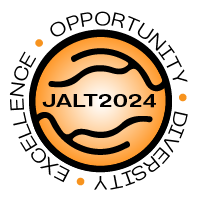8 May, 2021 - Whitney Sarver, Tracy Koslowski
Projects for Teaching Critical Thinking Skills
Whitney Sarver, Tracy Koslowski
In our May presentation, the presenters demonstrated the importance of critical thinking in the classroom and how activities encouraging such thinking have been incorporated as an integral part of lesson plans.
The presentation started with the question of "what is critical thinking?" This was defined as the examination of something to make a judgment in order to solve a problem. Such thinking is important for academia as it is the key to academic success.
Important aspects of critical thinking include:
- Questioning skills.
- Using and interpreting information
- Keeping an open mind
- Drawing conclusions.
Some particular cases were illustrated by Tracy. At the university in Mississippi where she teaches, she works with foreign students to prepare them for entry to the university. In the process, she has found that getting the students to apply deeper analysis has been hard to achieve. In particular, the challenge has been finding suitable syllabus, creating and adapting materials, creating projects and evaluation of results. As a first step, she thinks about what students need to know. This aids in formulating student learning outcomes (SLO) as it helps her to visualize what is necessary for the students to achieve. She then thought about a suitable mode (i.e. The tools used to educate) and what skills should they have. As a result of this planning she has carried out the following teaching projects:
Podcast project
During the podcast project Tracy had her students carry out various activities with the goal of producing their own podcast in the end. The activities she used to help them do this included an analysis of what makes a good interview, the sharing of ideas on Flipgrid, the application of technical skills and how to edit/produce their end product. Her assessment consisted of how well they applied their technical skills, their reflection of what they had produced, and whether or not they achieved the set SLO.
VR Guided Tour
For this project, Tracy had her students pretend they were tour guides. The mode used to conduct the tour was Google maps and Google Expeditions (no longer available).
The lessons proceeded as per the steps used for the Podcast project. However, instead of analyzing podcasts, student analyzed free online tours available from various tourist attraction web sites. Students then shared a picture of a place they like and using Flipgrid students would ask one another questions about that place. Their final product was to narrate an online tour of their favourite places and as well as that they were free to add any music or special effects to this narration.
These activities automatically force students to think critically as it makes them consider how they should put their work together and communicate with their audience.
In terms of assessing the activities, the presenters did not state exactly what rubrics they used but instead advised us to limit their scope as it would be too time consuming to assess all possible outcomes.
In conclusion they presented some very useful lesson activities which are bound to make any student more engaged and thinking critically.
Link to meeting listing

